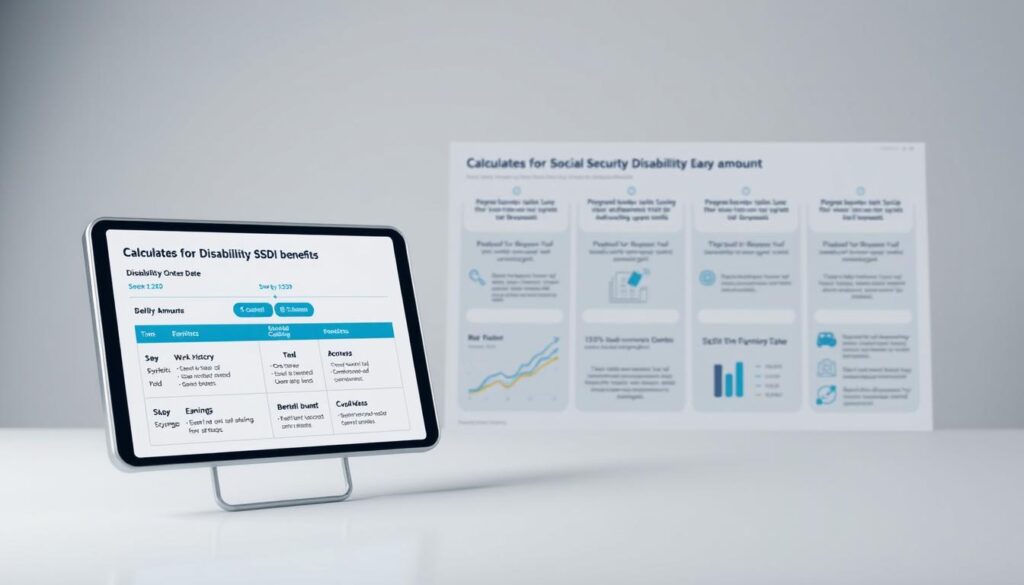Advanced Disability Benefits Estimator
Discover Your Potential Benefits
Are you curious about what disability benefits you might qualify for? Let's find out together!
Understanding whether disability benefits for dependents are taxable is crucial for families relying on these benefits. The taxation of disability benefits can be complex, involving various factors that determine the taxable amount.

For individuals receiving Social Security Disability Insurance (SSDI), knowing how their benefits and those of their dependents are taxed is essential for financial planning. Generally, disability benefits received by dependents are subject to the same tax rules as those received by the primary beneficiary.
The tax implications of these benefits depend on the total amount received and the recipient’s overall income situation. Clarifying the tax status of disability benefits for dependents can help families avoid unexpected tax liabilities.
Understanding Disability Benefits for Dependents
Social Security disability benefits extend beyond the disabled individual, potentially providing financial assistance to their dependents. The Social Security Administration offers two primary disability programs: Social Security Disability Insurance (SSDI) and Supplemental Security Income (SSI).
Types of Social Security Disability Benefits
SSDI is a form of insurance based on a person’s average earnings before becoming disabled. In contrast, SSI is a need-based program designed for individuals with low income, minimal assets, and insufficient work credits. Understanding the differences between these programs is crucial for determining eligibility and benefit amounts.
Who Qualifies as a Dependent
Dependents who may qualify for benefits include spouses, divorced spouses under certain conditions, children under 18, adult children disabled before age 22, and in some cases, dependent parents. Each type of dependent must meet specific eligibility requirements, and the benefit amount is calculated as a percentage of the primary beneficiary’s disability payment.
How Does Social Security Calculate Disability Payments
Understanding how the SSA calculates disability payments requires knowledge of AIME, PIA, and bend points. The calculation of Social Security Disability Insurance (SSDI) benefits is a multi-step process.
Average Indexed Monthly Earnings (AIME)
The SSA calculates your Average Indexed Monthly Earnings (AIME) using up to 35 years of your highest indexed earnings. This step adjusts your earnings for wage growth and inflation, ensuring that your earlier earnings are not undervalued.
Primary Insurance Amount (PIA)
Your Primary Insurance Amount (PIA) is determined using a progressive formula applied to your AIME. This formula forms the base of your disability benefit.
Bend Points and Calculation Formula
The SSA uses “bend points” to determine the percentage of your earnings you receive in benefits. You receive 90% of earnings up to the first bend point, 32% up to the second bend point, and 15% of earnings exceeding the third bend point. The bend points are adjusted annually based on changes in the national average wage index.
| Calculation Component | Description | Percentage of Earnings |
|---|---|---|
| First Bend Point | Earnings up to the first bend point | 90% |
| Second Bend Point | Earnings between the first and second bend points | 32% |
| Earnings Beyond Third Bend Point | Earnings exceeding the third bend point | 15% |
Dependent Benefits Calculation
The Social Security Administration (SSA) calculates dependent benefits based on the primary beneficiary’s disability payment. This calculation is crucial for families relying on SSDI benefits.
Percentage of Primary Beneficiary’s Amount
Dependent benefits are calculated as a percentage of the primary beneficiary’s disability payment amount. Eligible spouses and children can typically receive up to 50% of the disabled worker’s primary insurance amount. The exact percentage may vary based on the dependent’s relationship to the disabled worker.

Family Maximum Benefit
The SSA imposes a Family Maximum Benefit (FMB) that caps the total SSDI benefits payable to a family based on one worker’s earnings record. This family maximum is typically between 150% and 180% of the primary beneficiary’s disability benefit amount. When the total benefits exceed this maximum, each dependent’s benefit is reduced proportionally.
Taxation of Disability Benefits
Taxation rules for SSDI benefits differ significantly from those for regular income. The Internal Revenue Service (IRS) has established specific guidelines that determine the taxability of these benefits.
General Tax Rules for SSDI Benefits
For primary beneficiaries, SSDI benefits may be taxable if their combined income exceeds certain thresholds. Combined income includes adjusted gross income, nontaxable interest, and half of the Social Security benefits. Individual filers with combined income between $25,000 and $34,000 may have up to 50% of their benefits taxed, while those with income above $34,000 may have up to 85% of benefits subject to taxation.
Special Tax Considerations for Dependents
Dependent benefits have special tax considerations. The dependent must determine if the benefits are taxable based on their own total income, not the income of the primary beneficiary. For children receiving dependent benefits, the benefits are typically considered the child’s income for tax purposes. However, parents may need to include this income on their return if the child cannot file their own. Annual cost of living adjustments (COLA) to disability benefits can potentially push recipients into higher tax brackets over time, affecting the taxable portion of benefits.
Factors That May Affect Taxation
Understanding the factors that impact the taxation of disability benefits for dependents is essential for beneficiaries. Several elements can significantly influence how these benefits are taxed.
Combined Income Thresholds
The IRS uses a specific formula for determining the taxation of Social Security benefits, known as “combined income.” This includes adjusted gross income, nontaxable interest, and half of your Social Security benefits. If your combined income exceeds certain thresholds, your disability benefits may become taxable.
| Filing Status | Combined Income Threshold | Taxation Percentage |
|---|---|---|
| Single | $25,000 – $34,000 | Up to 50% |
| Single | Above $34,000 | Up to 85% |
| Married Filing Jointly | $32,000 – $44,000 | Up to 50% |
| Married Filing Jointly | Above $44,000 | Up to 85% |
Filing Status Impact
Your filing status dramatically affects the income thresholds at which benefits become taxable. For instance, married couples filing separately are likely to have their benefits subject to taxation. Other forms of income, such as wages or self-employment earnings, can also push you over the threshold for benefit taxation.
Receiving workers’ compensation benefits or other public disability payments may reduce your SSDI benefits during the same period, potentially affecting the taxable amount. Understanding these factors allows beneficiaries to implement tax planning strategies to minimize their tax liability.
Reporting Disability Benefits on Tax Returns
The process of reporting disability benefits for dependents on tax returns requires careful consideration of several factors, including the type of benefits received and the tax implications.
SSA-1099 Form
The Social Security Administration issues an SSA-1099 form to all recipients of Social Security benefits, including SSDI and SSI beneficiaries, by January 31st each year. This form documents the total amount of benefits received during the previous tax year, which is essential for accurately reporting disability benefits on your tax return. For dependents, the SSA-1099 will be issued in the dependent’s name with their Social Security number.
Calculating Taxable Portion
Calculating the taxable portion of SSDI or SSI benefits can be complex, especially when dealing with back payments that may cover multiple months or years. IRS Publication 915 provides detailed instructions and worksheets to help determine the taxable amount. Tax preparation software can also assist with these calculations. However, consulting a tax attorney or accountant familiar with disability benefits is advisable, especially for large back payments that may impact tax liability across multiple years.
Conclusion
Understanding the tax implications of disability benefits for dependents is crucial for effective financial planning. Families receiving SSDI or SSI benefits must navigate complex tax rules to maximize their financial support. The taxation of these benefits depends on various factors, including combined income thresholds and filing status.
By staying informed about current tax laws and Social Security regulations, families can better manage the taxation of disability benefits and optimize their overall financial well-being. Accurate record-keeping and consultation with tax professionals can also help ensure proper reporting and minimize tax liabilities.
